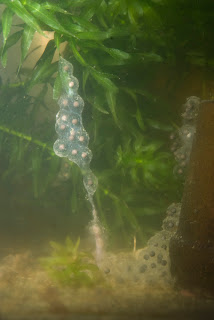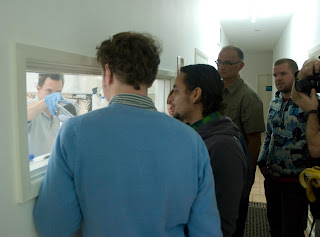 |
| tadpole of Telmatobius culeus |
After a
couple of days that we had the first eggs of Telmatobius culeus, now we have
tadpoles. It was not so easy; everything was very nice and good until the day 6
and 7 when almost all our embryos were very well developed but we don’t know
why?, but several of the tiny tadpoles that were inside of the eggs could not go
out, in some cases we saw that some individuals were trying to go out but it was
not successful and in other cases other small tadpoles were able to go out but they died. We are
still searching the possible reasons for this, but fortunately we already have
free swimming tadpoles that are doing well and they are already growing up very
fast.
 |
| Tadpole of Telmatobius culeus |
It is a
great opportunity to learn more about this species and also to get more
information that can be useful for the future not just for us but also for
other institutions that want to work with this species.
 |
| size of a tadpole of Telmatobius culeus (one week after) |
It seems
that the good news are coming together
because a couple of days before we had another species of Telmatobius having
eggs, this time from the south of Bolivia that probably is a new species for
Bolivia or to science. Now we have also some tadpoles from this new species and
with this we increase at four the species that we are able to breed in our
captive breeding facilities.
 |
| another species of Telmatobius with a new offspring |
These events
are giving us a lot of information and also hope for these species and also if
we are able to find some species that we are not finding anymore, we think we
are going to be able to give them a chance to exist in this world.


















.jpg)

















